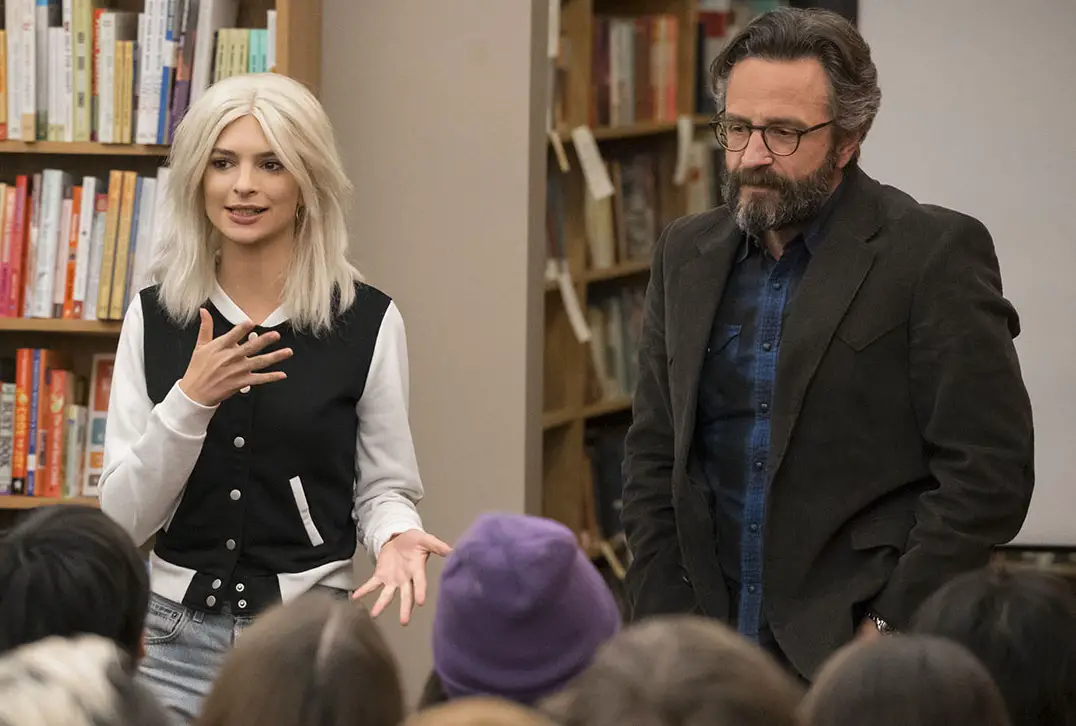“Easy,” a Netflix-original anthology television series composed of 16 different standalone episodes, is indie-guru Mark Swanberg’s 2016 project to dramatize modern relationships through a lens that is true to life, transparent and unafraid to venture into awkward or embarrassing territories.
In the series, Swanberg homes in on the narratives of an assortment of characters, using his much-beloved Chicago as the background against which to set these diverse stories. But, as is usually the case with a lot of TV shows, not all episodes are created equal.
With less than a month before the premiere of the third season of “Easy,” it’s only right we hark back to the series’ beginnings and take a look at some of its most accomplished episodes.
Here are the top three most noteworthy episodes of “Easy.”
1. “Vegan Cinderella”
From the moment I first started watching “Vegan Cinderella” — the show’s refreshing sophomore episode — I knew I was in for a treat. While one of the feats of “Easy” is its gutsy exploration of an array of complicated themes, this episode proves that simplicity really is the ultimate form of sophistication.
Centering on the budding romantic relationship between two women in their 20s, the episode’s success hinges on the way it effortlessly captures the endearing clumsiness and comical pressures that inevitably come with falling for someone.
While the subject matter is significantly less heavy than that of other episodes, the end result is no less poignant, and the story of Jo and Chase weaves the buoyancy of young love with the ineluctable awkwardness of dating. Moreso, it sheds an honest light onto the first few stages of a new relationship when things are moving past fresh flirtation and beginning to generate unprecedented expectations and anxieties.
While the episode is no doubt lighthearted in its tone, its subtext masterfully explores the delicate balance between mirroring a significant other’s habits and remaining true to yourself.
Jacqueline Toboni is sublime in her portrayal of Jo, a self-assured activist and understanding partner. Kiersey Clemmons’ (Chase) absentminded but oh-so-lovable energy plays right off Toboni’s, and the duo’s natural chemistry allows for every one of their interactions to feel unmistakably real. (Brownie points also have to be awarded for the depiction of a queer storyline that isn’t swaddled by tragedy.) Overall, “Vegan Cinderella” is a playful snapshot of a love story that is sure to satisfy any romantic — and maybe even convert a cynic or two.
2. “Controlada”
With “Controlada,” viewers witness a complete change of pace. If “Vegan Cinderella” was a carefree peek at both the clash and synergy of new relationships, “Controlada” is an exhaustive probe into one woman’s inner turmoil.
Gabi and Bernie, a married Hispanic couple living in the ’burbs, receive an impromptu visit from an old and wild mutual friend, Martin, who is coincidentally also Gabi’s old flame. Martin’s feral vibe represents a stark contrast to Bernie’s stiffness — and by extension, Gabi’s. Martin and Bernie are virtual opposites, and while it’s true that they’re not the full-fledged characters they could be, they serve their purpose of embodying the two extremities of Gabi’s psychology.
The whole episode is teeming with repressed energy, and we see Gabi — so given to decorum and restraint — struggle to accommodate her life to the mess that Martin brings in, even when she is not so secretly desirous of it. What ensues is a physical and mental disruption of order in both the household and in Gabi herself, which culminates in an ending that, without giving too much away, presents viewers with a jarring but also logical conclusion to a steady descent into emotional volatility.
Beautiful and elusive, Gabi is character to remember. Aislinn Derbez (Gabi) is simply phenomenal and brings to life the emotional depth of a woman torn between incongruous desires. Gabi’s sense of matrimonial duty, her emotional caution when dealing with Martin, her moments of awkward inhibition and her hunger for something more all coalesce into making her a fascinating psychological study. You’ll feel every one of her impulses as you follow her navigating desires and attempt to make sense of her innermost emotions.
3. “Art and Life”
Picking a third episode was a difficult task, but at the end of the day, we’d be doing the series a disservice if we were to exclude, “Art and Life” from the list. In this episode, Marc Maron plays a surly, temperamental graphic novelist, Jacob Malco. Malco, someone accustomed to extracting material from his personal life at the expense of the people involved, markets himself as an unapologetic proponent of blurring together life and art. Yet in this episode, we see him objecting to someone else — one of his much younger romantic interests — following his same strategy.
Although not always a fan-favorite, this episode does a fantastic job of kick-starting a conversation with the intended goal of engaging you into larger meditations. The primary reason it works so well is that it draws attention to a variety of thought-provoking contemplations on the concept of art and all that it encompasses.
Is millennial art, one that champions selfies and YouTube videos, any less valid — or any more narcissistic — than Jacob’s own art? Is it ethical to exploit people’s privacy for the sake of creating such art? Is older artists’ condemnation of modern art merely a product of generational dissonance? The episode tackles all of the aforementioned reservations through an eccentric but absolutely engrossing performance from Maron, as well as various instances of scintillating dialogue (especially conversations between Jacob and his old friend Annabelle.)
As is the case with many of the series’ episodes, “Art and Life” is not devoid of one-dimensional characterization. Emily Ratajkowski (Alison) never evolves past the cardboard-cutout caricature of a social-media darling, and the plot’s developments do seem rather predictable at times.
Still, despite this formulaic approach to some of the plot, this episode encapsulates one of the show’s strongest suits: the ability to faithfully imitate real-life interactions while still capturing the thought, nuance and perceptive philosophical complexity that they come with.
















